On the Same Page
Reader’s Guide
Peter Pan
Chapters
► Adaptations of Peter Pan
Sir James Matthew Barrie, 1st Baronet
(May 9, 1860 – June 19, 1937)
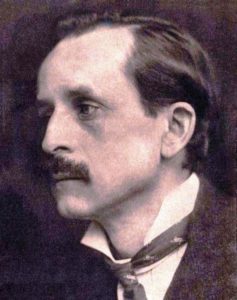 James Barrie, often referred to as J. M. Barrie, was the ninth of ten children born to David Barrie, a hand weaver, and the former Margaret (Mary) Ogilvy in Kirriemuir, Scotland on May 9, 1860.
James Barrie, often referred to as J. M. Barrie, was the ninth of ten children born to David Barrie, a hand weaver, and the former Margaret (Mary) Ogilvy in Kirriemuir, Scotland on May 9, 1860.
Little Jamie had a complicated relationship with the matriarch of this strict Calvinist family. His maternal grandmother had died when Mary was eight, leaving her to run the large household. She had no real childhood of her own which may have tainted her relationships with her children. 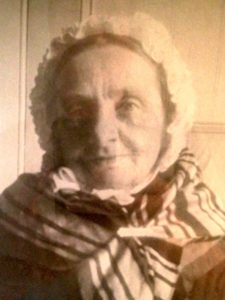
Mary had a very clear favorite, Jamie’s older brother David. When Jamie was six and David fourteen, David was killed in an ice skating accident, and Mary plummeted into an emotional abyss. Attempting to gain her love and give her some consolation, little Jamie began dressing in his dead brothers clothes, tried to act like him, give his familiar whistles, etc. At one point, he walked into a room where his mother was sitting in the dark, her eyes grew large and she asked, “Is that you?” to which Jamie replied, “No, it’s no him; it’s just me.” The only thing that seemed to give his mother any comfort was knowing that David would never grow up and leave her behind.
Jamie was a small child, short (Even as an adult, he never passed five feet three inches.) and slight who drew attention to himself through storytelling.
He spent much of his school years in Glasgow where his two oldest siblings, Mary Ann and Alexander, taught at the academy. There he played pirates, organized the first drama club, and produced his first play, Bandelero the Bandit. He also became a voracious reader of adventure books like those written by James Fennimore Cooper and of the widespread penny dreadfuls.
He later attended Edinburgh University, worked for a time on the Nottingham Journal, and then headed to London to become a “real” writer.
His first two novels, Auld Licht Idylls (1888) and The Little Minister (1891), contained stories about a strict religious order that was loosely modeled after the one his grandfather belonged to. They were both popular successes. He then turned his attentions back to the stage with popular and critical successes of The Admirable Crichton and Quality Street with many others to follow.
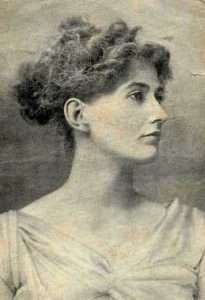 He met and married actress Mary Ansell in 1894. While the two were well matched in many ways, rumors said that the union was never consummated. After fifteen years, Mary had an affair and asked for a divorce. Barrie tried to convince her to stay, but eventually gave in. The two continued to be friends and he supported her financially even after she remarried. They had a regular dinner date on their wedding anniversary.
He met and married actress Mary Ansell in 1894. While the two were well matched in many ways, rumors said that the union was never consummated. After fifteen years, Mary had an affair and asked for a divorce. Barrie tried to convince her to stay, but eventually gave in. The two continued to be friends and he supported her financially even after she remarried. They had a regular dinner date on their wedding anniversary.
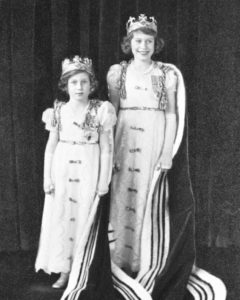 Barry was very social and had friends of all ages. During the 1930’s, he was a regular visitor to the Duke of York’s family where he told stories to his daughters, Princesses Elizabeth and Margaret. Margaret said of Barrie, “He is my greatest friend, and I am his greatest friend!”
Barry was very social and had friends of all ages. During the 1930’s, he was a regular visitor to the Duke of York’s family where he told stories to his daughters, Princesses Elizabeth and Margaret. Margaret said of Barrie, “He is my greatest friend, and I am his greatest friend!”
Many of his older friends were from high literary circles. He was good friends with George Meredith, Robert Louis Stevenson, H. G. Wells, and his London neighbor George Barnard Shaw. Active and playful, he organized a long lasting cricket team which included, among others, Owen Season (the editor of Punch magazine), Arthur Conan Doyle, P. G. Wodehouse, G. K. Chesterton, and A. A. Milne.
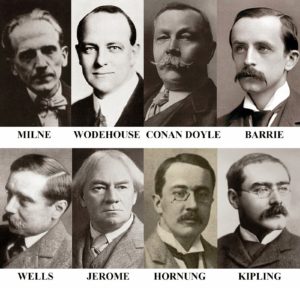 Another friend, Broadway producer Charles Frohman famously declined a space on a Lusitania lifeboat quoting Peter Pan, “Why fear death? It is the most beautiful adventure that life gives us.”
Another friend, Broadway producer Charles Frohman famously declined a space on a Lusitania lifeboat quoting Peter Pan, “Why fear death? It is the most beautiful adventure that life gives us.”
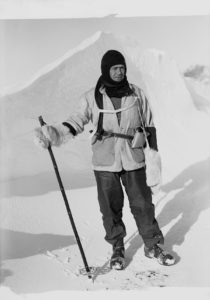 Nonliterary friends included the African explorer Joseph Thomson and Antarctic explorer Robert Falcon Scott. Barrie was one of the seven people Scott wrote to in his final hours asking him to take care of his son (and Barrie’s godson) Peter and wife Kathleen. In the final line of the letter, Scott wrote:
Nonliterary friends included the African explorer Joseph Thomson and Antarctic explorer Robert Falcon Scott. Barrie was one of the seven people Scott wrote to in his final hours asking him to take care of his son (and Barrie’s godson) Peter and wife Kathleen. In the final line of the letter, Scott wrote:
“I never met a man in my life whom I admired and loved more than you, but I never could show you how much your friendship meant to me, for you had much to give and I nothing.”
With the early deaths of Stevenson, Frohman, and Scott, some began to talk about the curse of being friends with J.M. Barrie.
Barrie caught pneumonia in 1937 and died on June 14. He was buried next to his parents in Kirriemuir.
 He left much of his estate to his secretary, Cynthia Asquith, with the remainder going to various charitable institutions. Years earlier, he had bequeathed all rights to Peter Pan to the Great Ormond Street Hospital for Children in London. In 1988, after the original copyright had expired, the House of Lords added a special clause in the Copyright Designs and Patents Act giving the hospital rights to Peter Pan forever.
He left much of his estate to his secretary, Cynthia Asquith, with the remainder going to various charitable institutions. Years earlier, he had bequeathed all rights to Peter Pan to the Great Ormond Street Hospital for Children in London. In 1988, after the original copyright had expired, the House of Lords added a special clause in the Copyright Designs and Patents Act giving the hospital rights to Peter Pan forever.
The Llewelyn-Davies Family
In 1897, while walking his St. Bernard in Kensington Gardens, J. M. Barrie met the (then three, but ultimately five) Llewelyn-Davies children, George, age five, Jack, age 4, and baby Peter who were out for an afternoon with their nanny. He amused them with wiggling ears and eyebrows. He later met their parents at a dinner party and became fast friends with the family and a regular visitor to their household.
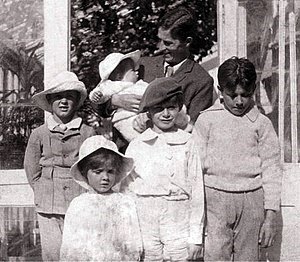 Arthur was an influential barrister (trial lawyer) and his wife Sylvia came from the famous deMaurier family. Her father was the writer and cartoonist George duMaurier of Punch fame. She was the sister of actor Gerald duMaurier, and aunt of writers Angela and Daphne duMaurier.
Arthur was an influential barrister (trial lawyer) and his wife Sylvia came from the famous deMaurier family. Her father was the writer and cartoonist George duMaurier of Punch fame. She was the sister of actor Gerald duMaurier, and aunt of writers Angela and Daphne duMaurier.
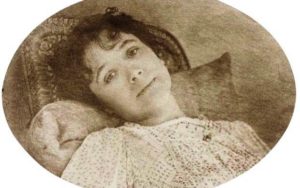 Arthur died in 1907, and “Uncle Jim” became more involved with the family, eventually supporting them financially. When Sylvia died in 1910, she named Barrie as guardian and trustee of her five sons and instructed the boys “treat him with absolute confidence and straight forwardness and to talk to him about everything.”
Arthur died in 1907, and “Uncle Jim” became more involved with the family, eventually supporting them financially. When Sylvia died in 1910, she named Barrie as guardian and trustee of her five sons and instructed the boys “treat him with absolute confidence and straight forwardness and to talk to him about everything.”
Barrie and Mary Hodgson (the nanny) acted as surrogate parents till boys were grown and they had continued to have close relationships into adulthood. Barrie first began telling George and Jack stories about their baby brother Peter who Barrie said could secretly fly, and the Peter Pan tales grew from there. The play found its way to the stage in 1904 and was wildly successful. Barrie adapted the story into a novel in 1911 which has never been out of print. The play was undoubtedly inspired by the Llewelyn-Davies boys and their antics. Barrie said, “by rubbing the five of you violently together, as savages with two sticks to produce a flame, I made the spark of you that is Peter Pan.”
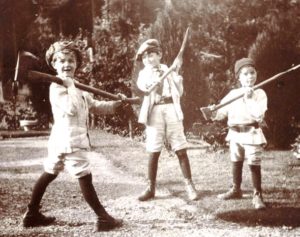 Barrie’s curse of friendship extended to the Llewelyn boys. George, the eldest died in action in World War I in 1915. Michael, the fourth, and a friend died in 1921 in a notoriously dangerous swimming hole. While Barrie could have done nothing to prevent the deaths of his surrogate sons, he grieved them for the rest of his life.
Barrie’s curse of friendship extended to the Llewelyn boys. George, the eldest died in action in World War I in 1915. Michael, the fourth, and a friend died in 1921 in a notoriously dangerous swimming hole. While Barrie could have done nothing to prevent the deaths of his surrogate sons, he grieved them for the rest of his life.
While in later years, some questioned the friendship of a single man with so many children, the boys strongly stated that there was never anything inappropriate with this playful, gentle, and childlike man and that they didn’t think he could have ever thought of anyone “that” way, man, woman, or child. As the youngest Nico said, “He was an innocent – which is why he could write Peter Pan.”
Adaptations of Peter Pan
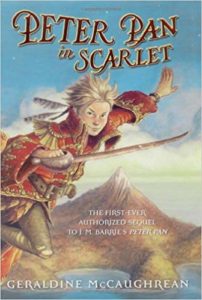 Being among the most well-known characters of the literary world, Peter Pan has made appearances not only on the stage and in books, but has also lit up the silver screen on numerous occasions, as well as taken the opportunity to appear in comics, on the radio, and even in video games.
Being among the most well-known characters of the literary world, Peter Pan has made appearances not only on the stage and in books, but has also lit up the silver screen on numerous occasions, as well as taken the opportunity to appear in comics, on the radio, and even in video games.
The Great Ormond Street Children’s Hospital has authorized several variations on the play (mostly musical), a radio show, a prequel novel, a sequel film, and a few notable film adaptations including Walt Disney’s animated version of the classic story.
In 2004, the hospital held a competition in which novelists were invited to submit sample chapters and plot outlines for a sequel. Geraldine McCaughrean’s book titled Peter Pan in Scarlet was selected for publication and released two years later. It serves as the only book officially recognized and authorized as the sequel to Peter Pan.
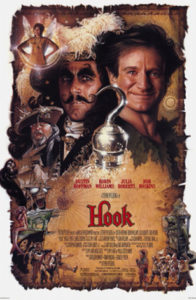 Beyond the numerous plays and musicals which have been approved by the Great Ormond Street Children’s Hospital and the official sequel, other notable authorized works pertaining to Peter Pan include the 1991 film Hook – which tells of a grown up Peter returning to Neverland to save his children from his nemesis, a 1995 radio BBC radio broadcast, the 2002 Disney sequel – which follows Wendy’s daughter, Jane, who is kidnapped and taken to Neverland where she meets Peter and his Lost Boys, and finally the 2003 film adaptation by Universal Studio.
Beyond the numerous plays and musicals which have been approved by the Great Ormond Street Children’s Hospital and the official sequel, other notable authorized works pertaining to Peter Pan include the 1991 film Hook – which tells of a grown up Peter returning to Neverland to save his children from his nemesis, a 1995 radio BBC radio broadcast, the 2002 Disney sequel – which follows Wendy’s daughter, Jane, who is kidnapped and taken to Neverland where she meets Peter and his Lost Boys, and finally the 2003 film adaptation by Universal Studio.
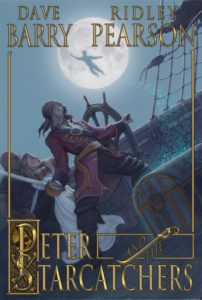 The unauthorized works based on Peter Pan include numerous books, films, and television shows each of which set their own spin on the classic tale such as giving Peter a fresh new backstory or else changing the location to be set in space.
The unauthorized works based on Peter Pan include numerous books, films, and television shows each of which set their own spin on the classic tale such as giving Peter a fresh new backstory or else changing the location to be set in space.
Among these other adaptations of Peter Pan are the acclaimed Peter and the Starcatchers series of novels which have, in turn, been adapted into a play. These books, as well as the 2015 movie Pan and the 2011 Neverland miniseries have decided science fiction twists to provide Peter with a fresh origin among the stars.
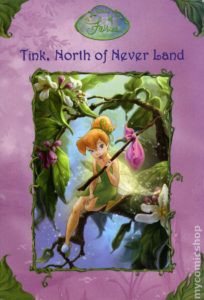 Another notable spin-off is the Disney Fairies series which leaves Peter Pan and focuses instead on his sidekick Tinkerbell and the mysterious fairies that inhabit Neverland. This series includes some fifty-odd books and six films.
Another notable spin-off is the Disney Fairies series which leaves Peter Pan and focuses instead on his sidekick Tinkerbell and the mysterious fairies that inhabit Neverland. This series includes some fifty-odd books and six films.
The simple fact that writers cannot leave Peter Pan alone shows the lasting impact of J. M. Barrie’s original work.
Peter Pan Syndrome
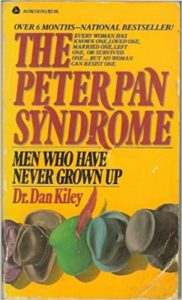 Popularized in the 1980’s, the term Peter Pan syndrome refers to an individual’s inability to take on adult responsibilities. However, while commonly talked about and even referred to by certified psychologists, Peter Pan syndrome is not recognized by the American Psychiatric Association or the World Health Organization.
Popularized in the 1980’s, the term Peter Pan syndrome refers to an individual’s inability to take on adult responsibilities. However, while commonly talked about and even referred to by certified psychologists, Peter Pan syndrome is not recognized by the American Psychiatric Association or the World Health Organization.
Despite its pseudo-psychology status, the term continues to hold sway. Most notable is the book The Peter Pan Syndrome: Men Who Have Never Grown Up by Dr. Dan Kiley. People have also talked about Peter Pan syndrome in connection to Michael Jackson and Adolf Hitler. One study done in 2010 linked those with Peter Pan syndrome to traits such as limited support substance abuse, infidelity, and domestic violence. Another study drew a connection between Peter Pan syndrome and helicopter parents.
Connected with Peter Pan Syndrome is the Latin term puer aeternus or eternal boy, a term used in some branches of psychology as well as mythology and literary analysis as one of the classic archetypes.
In psychology the puer aeternus refers to part of the human psyche that is split into a positive and negative side. The positive is tied to potential for growth and hope for the future and the negative is connected to a refusal to meet life’s challenges head on.
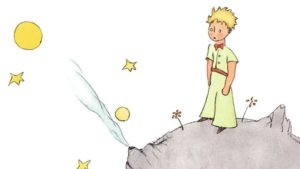 In mythology and literary studies, puer aeternus refers to child-like gods or a god-like figure that is slain and then resurrected. Broadly speaking, this category includes characters such as Eros, Tammuz, Attis, Adonis, and Osiris. In modern literature characters such as Peter Pan, The Little Prince, Percy Jackson, and Michael Vey all are examples of this archetype.
In mythology and literary studies, puer aeternus refers to child-like gods or a god-like figure that is slain and then resurrected. Broadly speaking, this category includes characters such as Eros, Tammuz, Attis, Adonis, and Osiris. In modern literature characters such as Peter Pan, The Little Prince, Percy Jackson, and Michael Vey all are examples of this archetype.
J.M. Barrie the Dramatist
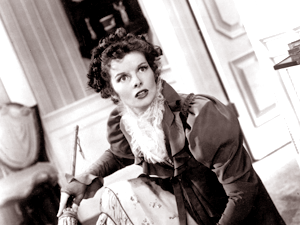 While Barrie wrote a number of successful novels, he was noted primarily during his lifetime as a dramatist. He had great success with parlor dramas such as Quality Street (seen here with Katherine Hepburn in the 1937 film adaptation), The Twelve Pound Look, and What Every Woman Knows and more whimsical offerings such as A Kiss for Cinderella and, of course, Peter Pan which was a play years before it was adapted into book form.
While Barrie wrote a number of successful novels, he was noted primarily during his lifetime as a dramatist. He had great success with parlor dramas such as Quality Street (seen here with Katherine Hepburn in the 1937 film adaptation), The Twelve Pound Look, and What Every Woman Knows and more whimsical offerings such as A Kiss for Cinderella and, of course, Peter Pan which was a play years before it was adapted into book form.
Two plays in particular might be noted for similarities with Peter Pan, a perennial favorite The Admirable Crichton and the sometimes eerie Mary Rose.
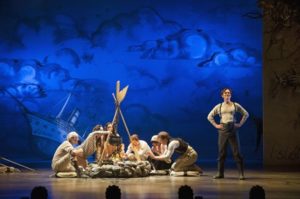 In The Admirable Crichton, Crichton is the butler for the well stationed and respected Earl of Loam and his family. While traveling abroad, the group is marooned on a tropical island. With the confines of English society gone and the imminent dangers of the island looming, the former noble proves to be a helpless imbecile; and the natural leaders quickly emerge. The earl’s oldest daughter, Lady Mary, and the resourceful butler, Crichton develop a fully functioning island society and, of course, fall in love. However, two years later, as the pair stand before the minister to unite their lives fully, a rescue ship is spotted. Back in their original roles, the earl captivates society with tales of his bravery and ingenuity, yet all involved in the island adventure are awkward and uncomfortable knowing who the true hero is, and Crichton and Mary struggle against their now forbidden love.
In The Admirable Crichton, Crichton is the butler for the well stationed and respected Earl of Loam and his family. While traveling abroad, the group is marooned on a tropical island. With the confines of English society gone and the imminent dangers of the island looming, the former noble proves to be a helpless imbecile; and the natural leaders quickly emerge. The earl’s oldest daughter, Lady Mary, and the resourceful butler, Crichton develop a fully functioning island society and, of course, fall in love. However, two years later, as the pair stand before the minister to unite their lives fully, a rescue ship is spotted. Back in their original roles, the earl captivates society with tales of his bravery and ingenuity, yet all involved in the island adventure are awkward and uncomfortable knowing who the true hero is, and Crichton and Mary struggle against their now forbidden love.
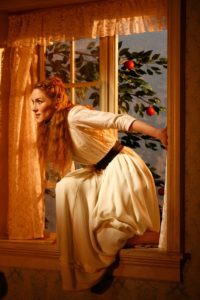 In the play Mary Rose, the title character disappears twice under mysterious circumstances. As a young girl traveling with her family to a remote Scottish island, she vanishes for three weeks. Upon returning, she shows no sign of trauma or the passage of time, nor does she recollect anything from her time away. Years later, as a young mother, she again visits the island. Again, she disappears, this time for decades. Upon her return, she again has no memory of the passage of the time and hasn’t aged a day appearing to be significantly younger than her now mature son.
In the play Mary Rose, the title character disappears twice under mysterious circumstances. As a young girl traveling with her family to a remote Scottish island, she vanishes for three weeks. Upon returning, she shows no sign of trauma or the passage of time, nor does she recollect anything from her time away. Years later, as a young mother, she again visits the island. Again, she disappears, this time for decades. Upon her return, she again has no memory of the passage of the time and hasn’t aged a day appearing to be significantly younger than her now mature son.
A Selection of Barrie Stage Plays
A Kiss for Cinderella
A Well-Remembered Voice
Alice, Sit by the Fire
Barbara’s Wedding
Dear Brutus
Echoes of War
Half an Hour
Ibsen’s Ghost
Jane Annie
Mary Rose
Old Friends
Pantaloon
Peter Pan, or The Boy Who Would Not Grow Up
Quality Street
Rosalind
Seven Women
Shall We Join the Ladies?
The Admirable Crichton
The Boy Castaways of Black Lake Island
The New Word
The Old Lady Shows Her Medals
The Twelve-Pound Look
The Reconstruction of a Crime
The Will
What Every Woman Knows
DISCUSSION QUESTIONS
- In the book, Peter Pan, the narrator describes Neverland as “a map of a person’s mind.” He says each person’s “Neverland varies a good deal.” What does your Neverland look like? You may consider drawing a map.
- When Peter Pan was written, children often played make-believe with pirates and Indians. If J.M. Barrie were writing Peter Pan today, what sorts of make-believe characters and adventures would the story contain? What purposes does role playing serve?
- In most stage productions, Captain Hook and Mr. Darling are played by the same actor. What are their similarities and differences within the story? What is the significance of this casting choice?
- Peter says he came to the nursery window to hear Wendy’s stories, because none of his friends knew any. If you could only share one story, which would it be?
- Why does Peter Pan inspire such devotion in the other characters?
- John and Michael are not given as large a role as Wendy. Why do you think they were included? How does their presence on the island affect Wendy? Is their status different than the other lost boys?
- What attitude do Mr. and Mrs. Darling have toward their children? What place does Nana occupy in the family and why? In what ways are the Darlings different and similar to other families?
- Peter Pan refuses to grow up, yet he and Wendy spend a great deal of time pretending to be adults. What appeal do you think each of them finds in this sort of game?
- What does Wendy gain by her voyage to Never Land? Does she learn anything about herself in her trip? Do any of the other characters change or learn?
- How do parts of Neverland reflect parts of our own world?
- What are the influences that pull us to maturity? What are the influences that keep us children? What is the difference between being a child and being an adult?
- Why is it necessary for children to be given the chance to make decisions and do things on their own? Why do parents worry about children having these opportunities?
- Why do events in London only take place at night?
- What features of Barrie’s story-telling method appeal to children? Adults?
- What do (1) Peter’s lack of memory and (2) his nightmares have to do with Barrie’s interpretation of childhood?
- Pan is a pipe playing, half goat, demi-god of woods and natural creatures. What qualities make Peter Pan-like?
Download the Reader’s Guide
(PDF Download)
Regular Hours of Operation
- Monday: 9:00 am – 6:00 pm
- Tuesday - Wednesday: 9:00 am – 8:00 pm
- Thursday: 11:00 am – 8:00 pm
- Friday: 10:00 am – 6:00 pm
- Saturday: 10:00 am – 2:00 pm
- Sunday: CLOSED
Closures in 2024
- January 1 – New Year’s Day
- January 15 – Martin Luther King, Jr., Day
- February 19 – Presidents Day
- March 22 – Staff Development Day
- April 6 – Building Maintenance
- May 25-27 – Memorial Day
- June 19 – Juneteenth
- July 4 – Independence Day
- August 31 – September 2 – Labor Day
- September 20 – LCEI Conference
- October 5 – Building Maintenance
- October 31 – Open from 9:00 am to 6:00 pm
- November 11 – Veterans Day
- November 27 – Closing at 5:00 pm
- November 28-30 – Thanksgiving
- December 24-26 – Christmas
- December 31 – New Year’s Eve
- January 1, 2025 – New Year’s Day
Address
73 North Center
Rexburg, Idaho 83440
We are located on Center Street, just north of Main Street, by the Historic Rexburg Tabernacle.
Contact Us
(208) 356-3461
24 Hour Phone Renewal: (208) 356-6658
askmadisonlibrary@madisonlib.org

